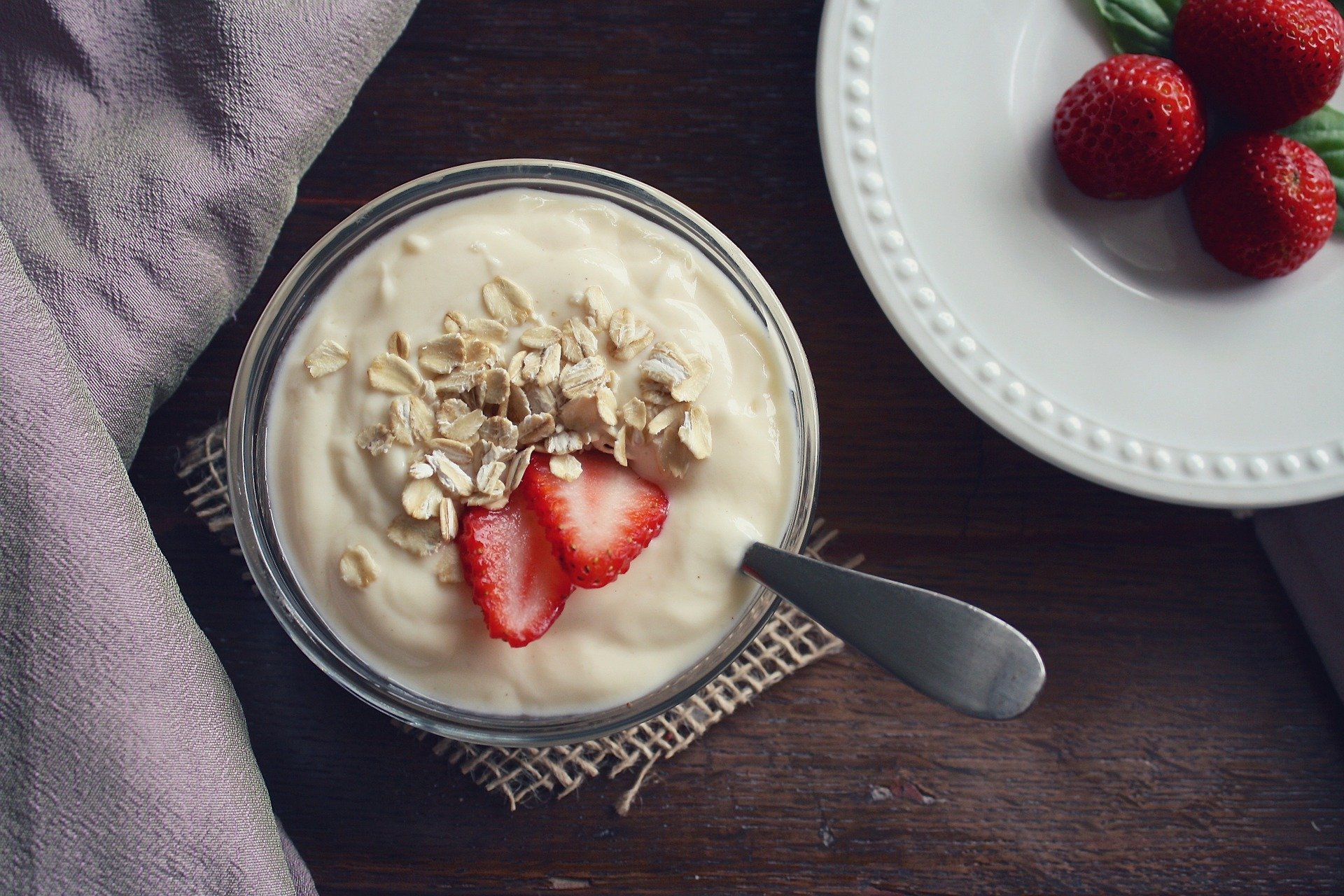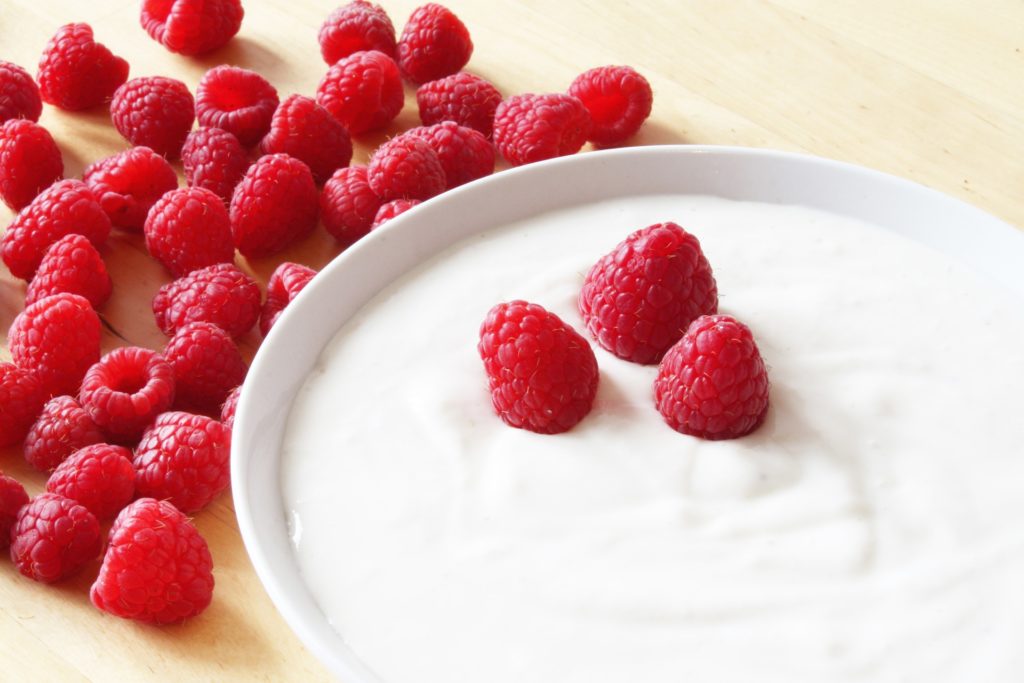This sweet, creamy snack is packed with energetic protein and healthy probiotics, making it the ideal breakfast, lunch, or afternoon snack. But yogurt has a lot more applications than just spooning it out of the container and into your mouth. Continue reading to learn five creative ways to use yogurt in the kitchen.
With yogurt, it’s time to think outside of the small plastic containers you eat for breakfast every morning with yogurt. This creamy, low-fat snack with a high protein content is one of the most adaptable dairy products you’ll find in your refrigerator. It has more applications than a handyman in a fixer-upper, with anything from French toast to face treatments to make your puppy’s fur shine.
Yogurt Nutrition Fact
5 Best Ways To Use Yogurt In Your Cooking
1. Baked Goods
Pieces of bread, biscuits, muffins, and cakes benefit from yogurt’s subtle tanginess and light, fluffy texture. You can use yogurt as a substitute in any recipe or bake a recipe that calls for it.
If you have Greek yogurt and a recipe that calls for ordinary yogurt, thin it up with extra water. Alternatively, drain away some liquid if the recipe calls for Greek yogurt, but you only have normal.
2. Marinades, Dressings, and Sauces
In yogurt, marinating meat or poultry tenderizes the protein much more slowly than a more acidic vinegar-based marinade. It results in a crispy but not rough or chewy cooked piece of meat.
Furthermore, a sour yogurt dressing or sauce drizzled over a spicy or slightly bitter food before eating completely balances it out. Yogurt can be a lighter and healthier alternative to mayonnaise in potato salad, egg salad, and coleslaw.
3. Frozen Yogurt
By turning your favorite yogurt flavor into frozen yogurt, you can transform it from a sweet treat to a show-stopping dessert. Most frozen yogurt recipes ask for the use of an ice cream maker, but if you don’t have one, you may still make frozen yogurt on your own.
Using a loaf pan or other baking pan, spread the mixture into the freezer and stir it every 30 to 45 minutes until it’s frozen, which should take 3 to 4 hours. Freshly made frozen yogurt also tends to freeze firm, so let it defrost for a minute or two before relishing the treat.
4. Dips
Yogurt is an excellent base for sweet and savory fruit dips and savory dips for crackers and crudities. When used as a healthy substitute for sour cream, it can be used in various dip recipes.
It can also be added to favorites such as guacamole, hummus, or spinach and artichoke dip to lighten the meal and provide a tangy flavor. Plain Greek yogurt should be used for savory dips because its thicker thickness adheres better to vegetable sticks. Flavored regular yogurt can be used in sweet dips if you like a sweeter taste.
5. Soups
If you’ve ever sat down to eat a bowl of cream-based soup such as pumpkin or carrot or pea or lentil and felt as though something was missing, there’s a strong probability that a dollop of plain yogurt would suffice.
Just before serving, adding plain Greek yogurt to a warm bowl of smooth soup helps balance out the rich, savory flavors with cold, acidic freshness.
In addition, it adds another healthy ingredient to the dish. Yogurt can make chilled soups instead of the traditional hot soup garnish. Yogurt can be used to dress up hot dishes such as soups, stews, chilis, and a garnish.
What Is The Process Of Making Yogurt?
Manufacturers have responded to the increase in yogurt consumption by creating a variety of yogurt varieties, including Greek yogurt, low-fat and no-fat yogurt, creamy, sipping, bio-yogurt, frozen, and so on… The core ingredients and manufacturing methods, on the other hand, are essentially the same:
Raw milk is delivered from the farm to the manufacturing facility, where it is processed.
When the milk arrives at the factory, it is processed to change its composition before manufacturing yogurt. The milk is then dry matter standardized, pasteurized (at 176°F or 80°C), and homogenized.
After pasteurization and homogenization, the milk must be cooled to 109.4-114.8° F (43-46° C) before adding the fermenting culture at a concentration of around 2%. Streptococcus thermophilus and Lactobacillus delbrueckii subsp. bulgaricus are the bacteria in the cultures. These unique yogurt ferments give it its consistency, flavor, scent, and health benefits, such as easier digestion.
Fruits, sugar, and other additives can be added after cooling to create a wide range of goods, and yogurt can then be packed.
Finally, the product is chilled and stored at refrigerator temperatures (40°F or 5° C).
What Are The Various Kinds Of Yogurt?
There are many different types of yogurt on the market, each with its manufacturing process and substances that can be added to plain yogurt before or after fermentation:
The ultimate fat level of yogurt is determined by the type of milk used (skimmed, semi-skimmed, or whole) and the addition of cream.
Milk is fermented in a jacketed fermentation tank for stirred-style yogurt, and the contents are mixed after fermentation. Fruit and flavorings can be added, after which the mixture is cooled, and the products are packaged and kept refrigerated.
Before packing, the milk is inoculated with ferments and mixed with other components (fruit preparation, sugar, flavoring, etc.) for set-style yogurt, also known as French style. During the incubation time, the fermentation process takes place in packages, after which the product is cooled and stored at refrigerator temperatures.
Drinking yogurt is stirred yogurt with a low total solids content that has been homogenized to lower viscosity. The product is then sweetened, flavored, and colored before being packaged in bottles.
What Does Greek Yogurt Entail?
Traditional Greek yogurt is made by straining regular yogurt, thicker thickness.
Codex Alimentarius defines concentrated fermented milk with a minimum protein concentration of 5.6 grams per 100 grams.
The watery element of the milk – the whey or lactoserum – is eliminated during the draining process, which explains Greek yogurt’s low lactose concentration.
However, there is no official designation for Greek yogurt or Greek-style yogurt. Only local decrees, which vary from country to country, govern the names. As a result, market procedures and terminology differ by country: Greek yogurt, Greek-style yogurt, strained yogurt, etc.
Conclusion
In every refrigerator, yogurt has secured a permanent position next to spicy Indian cuisine, where it is employed as a marinade and in body creams. Natural yogurt is yogurt the way it was designed to be, without the addition of sugar, fruit, or flavoring. It’s a true health-food superstar with a snow-white color and a creamy texture with a long list of benefits. Yogurt is available in various flavors and variations, including low-fat, non-fat, fruit-flavored, greek or strained, and whole milk yogurt. One intriguing aspect is that because of its probiotic characteristics, it is the only dairy product that a lactose intolerant individual can take.
Although yogurt is one of the most popular health foods globally, the consistency and flavor vary from country to country – European curd is incredibly smooth, creamy, and almost custard-like. In contrast, Indian yogurt, also known as Dahi, is slightly sour and water-rich. Skyr, Iceland’s traditional yogurt prepared from skimmed milk, is fat-free and more like cheese than yogurt, and it has a mild flavor. Yogurt is well-known for its ability to assist us in maintaining a leaner, sexier, and healthier physique.





